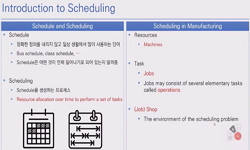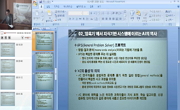후보자의 외모는 유권자의 선택에 어떤 영향을 미치는가? 제한된 인지적 능력으로 인해 유권자는 투표 결정 과정에서 다양한 휴리스틱(heuristic)에 의존한다. 미국을 비롯한 여러 국가를 대상...
http://chineseinput.net/에서 pinyin(병음)방식으로 중국어를 변환할 수 있습니다.
변환된 중국어를 복사하여 사용하시면 됩니다.
- 中文 을 입력하시려면 zhongwen을 입력하시고 space를누르시면됩니다.
- 北京 을 입력하시려면 beijing을 입력하시고 space를 누르시면 됩니다.

후보자의 미소와 득표율의 관계 : 제1~7회 지방선거 시군구 단체장 후보자들을 중심으로 = Smile to Win : How do Candidates’ Smiles Affect Election Outcomes?
한글로보기https://www.riss.kr/link?id=A108288262
- 저자
- 발행기관
- 학술지명
- 권호사항
-
발행연도
2022
-
작성언어
Korean
-
주제어
facial cue ; smile effect ; heuristic ; ecological rationality ; 후보자 외모 ; 미소 효과 ; 휴리스틱 ; 생태학적 합리성
-
등재정보
KCI우수등재
-
자료형태
학술저널
- 발행기관 URL
-
수록면
59-82(24쪽)
- 제공처
- 소장기관
-
0
상세조회 -
0
다운로드
부가정보
국문 초록 (Abstract)
후보자의 외모는 유권자의 선택에 어떤 영향을 미치는가? 제한된 인지적 능력으로 인해 유권자는 투표 결정 과정에서 다양한 휴리스틱(heuristic)에 의존한다. 미국을 비롯한 여러 국가를 대상으로 한 선행연구들에 따르면 미소를 포함한 후보자의 외모는 유권자들이 흔히 사용하는 휴리스틱 중의 하나이다. 그러나 한국에서 유권자들을 대상으로 외모의 효과를 분석한 연구는 많지 않다. 본 연구 는 제1~7회 전국 지방선거 시군구 단체장 선거에 출마한 후보자 중 5,005명의 선거 벽보를 활용하 여 후보자의 미소와 후보자의 득표율의 관계에 대해 분석했다. Microsoft Azure를 이용해 산출한 미소지수와 득표율의 관계를 분석한 결과, 전혀 웃지 않는 후보자에 비해 활짝 웃고 있는 후보자의 경우 득표율이 1.5%~2.6%p 정도 높은 것으로 나타났다. 또한 생태학적 합리성(ecological rationality) 이론이 주장하는 바와 같이 미소 휴리스틱의 효과는 선거 환경에 따라 달라졌다. 선거경쟁도가 높거나 많은 후보가 출마하여 유권자들의 선거에 대한 관심도가 높아지는 상황에서, 미소와 득표율 간에는통계적으로 유의미한 관계가 나타나지 않았다.
1 나진경 ; 허진, "얼굴에서 유추할 수 있는 유능함과 사회적 관계가 한국 선거 결과에 미치는 영향" 한국사회및성격심리학회 30 (30): 37-49, 2016
2 이상신 ; 유병국 ; 김양태 ; 김희숙, "안와전두피질의 기능" 대한생물치료정신의학회 13 (13): 36-44, 2007
3 유재연, "보도사진 속 국회의원 선거 후보자의 감정과 당선의 관계" 146-149, 2017
4 Laustsen, Lasse, "Winning Faces Vary by Ideology: How Nonverbal Source Cues Influence Election and Communication Success in Politics" 33 (33): 188-211, 2016
5 Kam, Cindy D., "Who Toes the Party Line? Cues, Values, and Individual Differences" 27 (27): 163-182, 2005
6 Deutsch, Francine M., "What is in a Smile?" 11 (11): 341-352, 1987
7 Eagly, Alice H., "What is Beautiful is Good, but… : A Meta-Analytic Review of Research on the Physical Attractiveness Stereotype" 110 (110): 109-128, 1991
8 Stirrat, Michael, "Valid Facial Cues to Cooperation and Trust : Male Facial Width and Trustworthiness" 21 (21): 349-354, 2010
9 Little, Anthony C., "Using Composite Images to Assess Accuracy in Personality Attribution to Faces" 98 (98): 111-126, 2007
10 Brambor, Thomas, "Understanding Interaction Models : Improving Empirical Analyses" 14 (14): 63-82, 2006
1 나진경 ; 허진, "얼굴에서 유추할 수 있는 유능함과 사회적 관계가 한국 선거 결과에 미치는 영향" 한국사회및성격심리학회 30 (30): 37-49, 2016
2 이상신 ; 유병국 ; 김양태 ; 김희숙, "안와전두피질의 기능" 대한생물치료정신의학회 13 (13): 36-44, 2007
3 유재연, "보도사진 속 국회의원 선거 후보자의 감정과 당선의 관계" 146-149, 2017
4 Laustsen, Lasse, "Winning Faces Vary by Ideology: How Nonverbal Source Cues Influence Election and Communication Success in Politics" 33 (33): 188-211, 2016
5 Kam, Cindy D., "Who Toes the Party Line? Cues, Values, and Individual Differences" 27 (27): 163-182, 2005
6 Deutsch, Francine M., "What is in a Smile?" 11 (11): 341-352, 1987
7 Eagly, Alice H., "What is Beautiful is Good, but… : A Meta-Analytic Review of Research on the Physical Attractiveness Stereotype" 110 (110): 109-128, 1991
8 Stirrat, Michael, "Valid Facial Cues to Cooperation and Trust : Male Facial Width and Trustworthiness" 21 (21): 349-354, 2010
9 Little, Anthony C., "Using Composite Images to Assess Accuracy in Personality Attribution to Faces" 98 (98): 111-126, 2007
10 Brambor, Thomas, "Understanding Interaction Models : Improving Empirical Analyses" 14 (14): 63-82, 2006
11 LaFrance, Marianne, "The social context of nonverbal behavior" Cambridge University Press 45-70, 1999
12 Key, Valdimer Orlando, "The responsible electorate" Harvard University Press 1966
13 Scharlemann, Jorn P.W., "The Value of a Smile : Game Theory with a Human Face" 22 (22): 617-640, 2001
14 Todorov, Alexander, "The Structure and Perceptual Basis of Social Judgments from Faces" 63 : 189-245, 2021
15 Cain, Bruce, "The Personal Vote : Constituency Service and Electoral Independence" Harvard University Press 1987
16 Wigginton, Michael, "The Limits of the Attractiveness Premium in Elections" 70 : 102274-, 2021
17 Oosterhof, Nikolaas N., "The Functional Basis of Face Evaluation" 105 (105): 11087-11092, 2008
18 Surawski, Melissa K., "The Effects of Physical and Vocal Attractiveness on Impression Formation of Politicians" 25 (25): 15-27, 2006
19 Thornton, George R., "The Effect upon Judgments of Personality Traits of Varying a Single Factor in a Photograph" 18 (18): 127-148, 1943
20 Uppal, Yogesh, "The Disadvantaged Incumbents : Estimating Incumbency Effects in Indian State Legislatures" 138 (138): 9-27, 2009
21 Campbell, Angus, "The American Voter" University of Chicago Press 1960
22 Dabbs, James M., "Testosterone, Smiling, and Facial Appearance" 21 (21): 45-55, 1997
23 Asano, Masahiko, "Smiles, Turnout, Candidates, and the Winning of District Seats: Evidence from the 2015 Local Elections in Japan" 37 (37): 16-31, 2018
24 Wang, Ze, "Smile Big or Not? Effects of Smile Intensity on Perceptions of Warmth and Competence" 43 (43): 787-805, 2017
25 Horiuchi, Yusaku, "Should Candidates Smile to Win Elections? An Application of Automated Face Recognition Technology" 33 (33): 925-933, 2012
26 Barger, Patricia B., "Service with a Smile and Encounter Satisfaction : Emotional Contagion and Appraisal Mechanisms" 49 (49): 1229-1238, 2006
27 Pugh, S. Douglas, "Service with a Smile : Emotional Contagion in the Service Encounter" 44 : 1018-1027, 2001
28 Mehu, Marc, "Relationship between Smiling and ;aughter in Humans (Homo sapiens): Testing the Power Asymmetry Hypothesis" 79 (79): 269-280, 2008
29 Otta, Emma, "Reading a Smiling Face: Messages Conveyed by Various Forms of Smiling" 82 : 1111-1121, 1996
30 Floyd, Kory, "Reacting to nonverbal expressions of liking : a test of interaction adaptation theory" 66 : 219-239, 1999
31 Nakashima, Sakiko Yoshikawa, "Polling the Face : Prediction and Consensus across Cultures" 98 (98): 1-15, 2010
32 Lenz, Gabriel S., "Looking the Part : Television Leads Less Informed Citizens to Vote based on Candidates’ Appearance" 55 (55): 574-589, 2011
33 Lawson, Chappell, "Looking Like a Winner : Candidate Appearance and Electoral Success in New Democracies" 62 (62): 561-593, 2010
34 Koo, Sejin, "Leading or Cheer-Leading? The Gender Gap in Political Smiles" 18 (18): 183-211, 2022
35 Tversky, Amos, "Judgment under Uncertainty : Heuristics and Biases : Biases in Judgments Reveal Some Heuristics of Thinking under Uncertainty" 185 (185): 1124-1131, 1974
36 Brown, William Michael, "Is prospective altruist-detection an evolved solution to the adaptive problem of subtle cheating in cooperative ventures? Supportive evidence using the Wason selection task" 21 (21): 25-37, 2000
37 Huckfeldt, Robert, "Information, Activation, and Electoral Competition in the 2002 Congressional Elections" 69 : 798-812, 2007
38 Todorov, Alexander, "Inferences of Competence from Faces Predict Election Outcomes" 308 (308): 1623-1626, 2005
39 Simon, Herbert A., "Human Nature in Politics : The Dialogue of Psychology with Political Science" 79 (79): 293-304, 1985
40 Fortunato, David, "Heuristics in Context" 7 (7): 311-330, 2019
41 Gigerenzer, Gerd, "Heuristic Decision Making" 62 (62): 451-482, 2011
42 Asano, Masahiko, "Getting Electoral Systems to Count: Does Candidate's Smile Matter in Japan?"
43 Berinsky, Adam J., "Facial Dominance and Electoral Success in Times of War and Peace" 81 (81): 1096-1100, 2019
44 Ahler, Douglas J., "Face Value? Experimental Evidence that Candidate Appearance Influences Electoral Choice" 39 : 77-102, 2017
45 Ashworth, Scott, "Electoral Selection, Strategic Challenger Entry, and the Incumbency Advantage" 70 (70): 1006-1025,
46 Herrmann, Michael, "Do Campaign Posters Trigger Voting based on Looks? Probing an Explanation for Why Good-Looking Candidates Win More Votes" 56 (56): 416-435, 2021
47 Chen, Fang Fang, "Culture Matters : The Looks of a Leader Are Not All the Same" 7 (7): 570-578, 2016
48 Klašnja, Marko, "Corruption and the Incumbency Disadvantage : Theory and Evidence" 77 (77): 928-942, 2015
49 Fortunato, David, "Context and Political Knowledge : Explaining Cross-National Variation in Partisan Left-Right Knowledge" 78 (78): 1211-1228, 2016
50 Mayhew, David R., "Congress: The Electoral Connection" Yale University Press 1974
51 Taylor, Shelley. E., "Cognitive Processes in Stereotyping and Intergroup Behavior" Psychology Press 1981
52 Cox, Gary W., "Closeness, expenditures, and turnout in the 1982House election" 83 : 217-231, 1989
53 Kam, Cindy D., "Close Elections and Cognitive Engagement" 73 : 1251-1266, 2011
54 Hayes, Danny, "Candidate Qualities through a Partisan Lens : A Theory of Trait Ownership" 49 (49): 908-923, 2005
55 Atkinson, Matthew D., "Candidate Faces and Election Outcomes : Is the Face–Vote Correlation caused by Candidate Selection?" 4 (4): 229-249, 2009
56 Masch, Lena, "Can a Beautiful Smile Win the Vote? : The Role of Candidates’ Physical Attractiveness and Facial Expressions in Elections" 40 (40): 213-223, 2021
57 O’Doherty, John, "Beauty in a Smile : the Role of Medial Orbitofrontal Cortex in Facial Attractiveness" 41 (41): 147-155, 2003
58 Chang, Chun‐Tuan, "Baby Face Wins? Examining Election Success Based on Candidate Election Bulletin via Multilevel Modeling" 20 (20): 97-112, 2017
59 Matsumoto, David, "American-Japanese cultural differences in attributions of personality based on smiles" 17 : 231-243, 1993
60 Lau, Richard R., "Advantages and Disadvantages of Cognitive Heuristics in Political Decision Making" 45 (45): 951-971, 2001
61 Kahn, Kim Fridkin, "A model of candidate evaluations in Senate elections : the impact of campaign intensity" 59 (59): 1173-1205, 1997
62 Riker, William H., "A Theory of the Calculus of Voting" 62 (62): 25-42, 1968
63 Lodge, Milton, "A Partisan Schema for Political Information Processing" 80 (80): 505-519, 1986
64 Fiske, Susan T., "A Continuum of Impression Formation, from Category-Based to Individuating Processes : Influences of Information and Motivation on Attention and Interpretation" 23 : 1-74, 1990
동일학술지(권/호) 다른 논문
-
한국 정치학자들의 회고록 국제정치학ㆍ비교정치학ㆍ행정학이 국내에서 성장ㆍ발전한 과정에 관한 기초자료들
- 한국정치학회
- 김학준
- 2022
- KCI우수등재
-
국가행위의 설명 모형에 관한 연구 : 전쟁 연구의 설명 모형에 대한 분석과 대안 모색
- 한국정치학회
- 김진욱
- 2022
- KCI우수등재
-
- 한국정치학회
- 이왕휘
- 2022
- KCI우수등재
-
한국인은 왜 재분배 정책을 지지하지 않는가? 설문실험 연구
- 한국정치학회
- 권혁용
- 2022
- KCI우수등재





 KCI
KCI DBpia
DBpia





